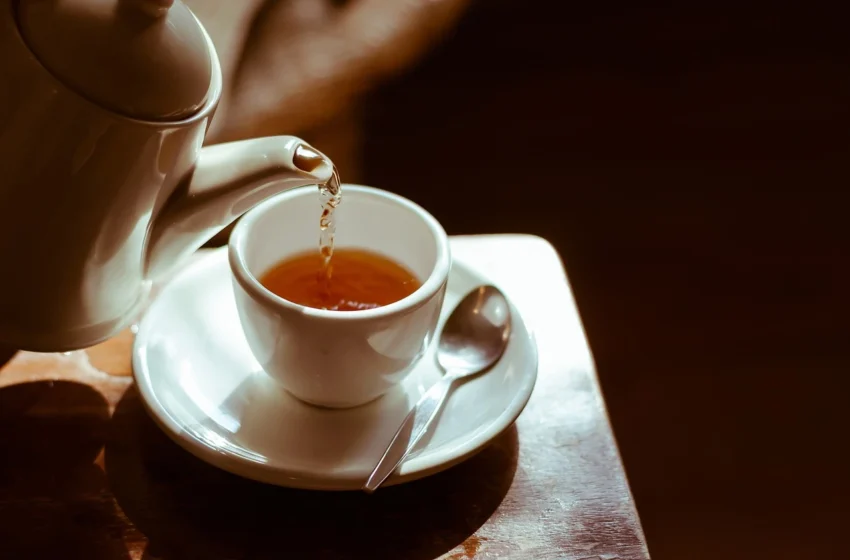Kyle Turner: The Rabbitohs legend who never forgot his roots

How to make tea perfectly every time
Tea is among the most commonly consumed beverages across the world, including in Australia. Whether you choose a basic black tea, a soothing herbal mix, or a refreshing green tea, making a cup of tea is a talent. A well-prepared cup can be energising, soothing, and satisfying. Here’s a detailed step-by-step guide on how to make tea the right way, ensuring every sip is full of flavour.
Understanding tea and its varieties
It’s important to know the several varieties of tea before entering the brewing process. Every tea has different flavour sensations, health advantages, and brewing directions. The most widely used tea types consist of the following:
1. Black tea
Black tea is fully oxidised and tastes strong. Usually, one enjoys it with sugar and milk. Among popular black teas are Darjeeling, Earl Grey, and English Breakfast.
Health benefits
- Increase energy levels due to its caffeine content.
- Their great antioxidant content helps to lower the risk of chronic diseases.
- May improve heart health.
2. Green tea
Green tea is little processed, preserving its delicate flavour and antioxidants. It tastes green, with a trace of sweetness.
Health benefits
- High in antioxidants, hence improving general health.
- Increases metabolism and weight control.
- Boosts brain performance and lowers neurodegenerative disease risk.
3. Herbal tea
Herbal teas are made from dried fruit, flowers, and herbs, herbal teas exclude caffeine. Popular selections include camomile, peppermint, and rooibos.
Health benefits
- Camomile encourages rest and sleep.
- Peppermint helps digestion and lessens bloat.
- Rooibos is bursting with antioxidants and improves cardiac performance.
4. Oolong tea
Oolong tea is semi-oxidised and falls between black and green tea is oolong tea. Rich and sophisticated, its taste has flowery and woodsy nuances.
Health Benefits
- Helps digestion and weight control.
- Increases mental awareness.
- It might lower cholesterol.
5. White tea
The least processed variety, white tea, is prized for its soft and mellow taste.
Health benefits
- Presents strong antioxidant values that improve the condition of the skin.
- Helps control blood sugar levels.
- Enhances cardiac function.
Essential equipment for brewing tea
To make tea, you’ll need:
- Clean and filtered water
- A kettle or pot for boiling
- A teacup or teapot
- An infuser or strainer for loose-leaf tea
- A teaspoon for measuring
- Milk, sweetener, honey, or lemon (optional)
Water quality is crucial. Avoid distilled or heavily chlorinated water as it can affect the flavour.
Step-by-step guide to making tea
1. Boil fresh water
Start always with fresh, cold water. Old water should not be reboiled since its taste may suffer from fewer oxygen. Temperature influences the taste extraction process most importantly.
- Black tea & herbal tea: 95-100°C (boiling water)
- Green & white tea: 70–85°C (let boiled water cool slightly)
- Oolong tea: 85-90°C
2. Measure your tea
Getting the ratio right ensures the best flavour. As a general rule:
- Loose-leaf tea: 1 teaspoon per cup (250ml)
- Tea bags: 1 bag per cup
- For stronger tea: Add an extra half teaspoon of loose tea
3. Steeping the tea
The nutrition and taste of steeping tea leaves explode. The kind of tea will affect the steeping periods.
- Black tea: 3-5 minutes
- Green tea: 1-3 minutes
- Herbal tea: 5-7 minutes
- Oolong tea: 3-5 minutes
- White tea: 2-4 minutes
Particularly with green and black teas, over-steeping can generate strong bitterness. Set consistency with a timer.
4. Customise your tea (optional)
Tea is highly versatile and can be enhanced with various additions:
- Milk & sugar: Black teas often call for milk and sugar, especially Assam and English Breakfast.
- Honey or lemon: Either honey or lemon improves green and herbal teas.
- Spices (e.g., ginger, cinnamon): Adds warmth and depth
- Mint leaves: A pleasant variation is herbal and green teas from mint leaves.
5. Enjoy your perfectly brewed tea
Remove the tea bag or sieve the loose leaves once brewed. Quickly swirl the tea; then stop to savour the scent before gently sipping to taste everything.
Top tips for the perfect brew
- Use high-quality tea leaves: Use quality tea leaves; generally speaking, loose-leaf tea tastes better than tea bags.
- Store tea properly: Store tea carefully in an airtight container apart from direct sunlight and moisture.
- Experiment with brewing times: Your tastes in food will help you to change the temperature and steeping length.
- Use the right teaware: For herbal infusions, glass teapots work well; for most teas, porcelain or ceramic teapots are preferred.
- Drink tea mindfully: Drink tea with purpose; see it as a slow ritual rather than a beverage.
Conclusion
Brewing the perfect cup of tea is both a science and a personal experience. Choosing good tea, changing the water temperature, and steeping it correctly can help you to maximise your enjoyment of drinking tea. Whether you sip a well-made cup of tea alone for some quiet or with friends, it’s always a delight. Choose your preferred tea, then use these guidelines and savour the ideal brew.

